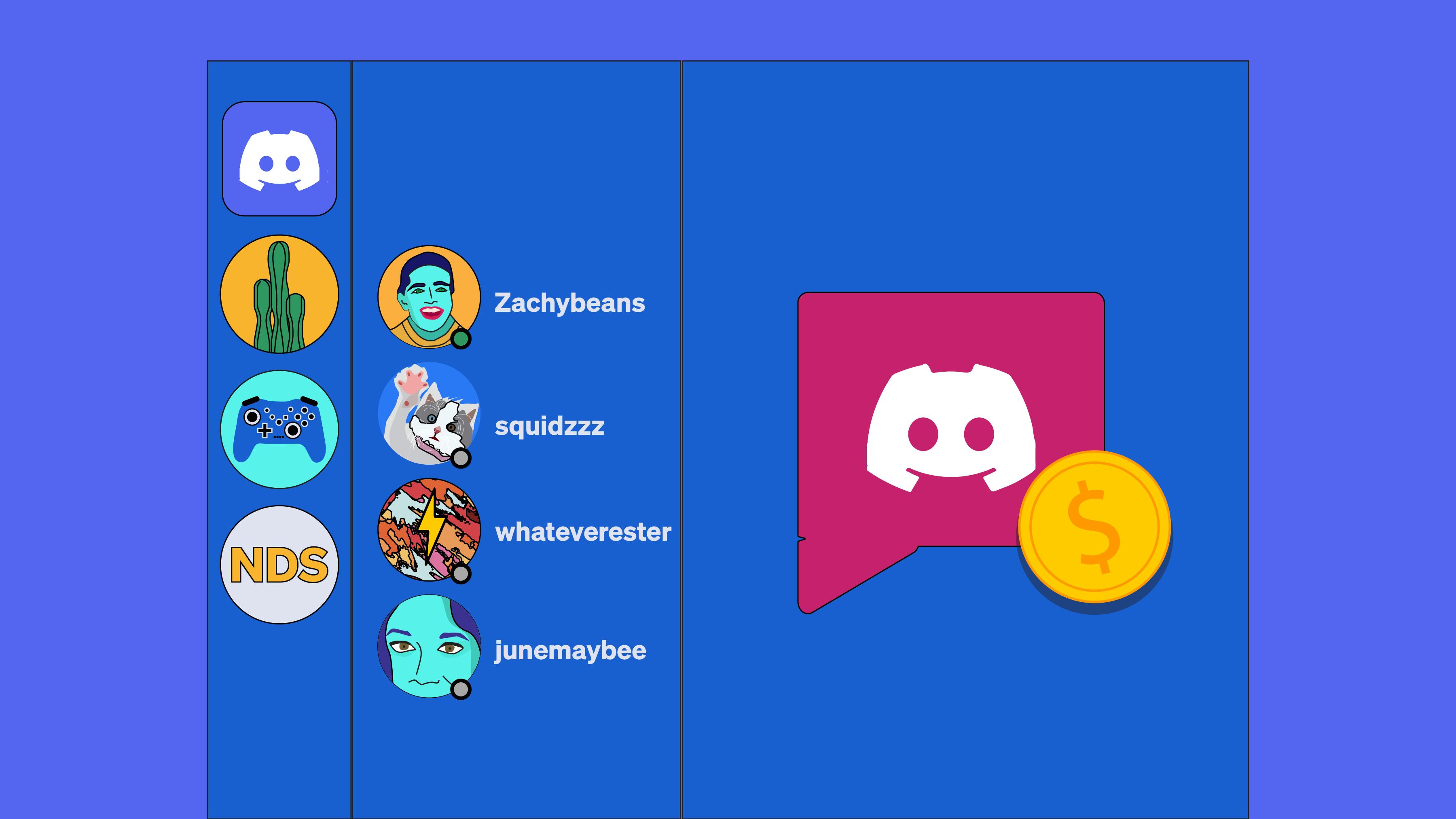You’re focused on mixing new releases at the studio. You’re busy sounding out brand new guitar licks. In other words, you’re busy with your band. And it’s paying off. Your audience is growing.
And now that you’re graduating from garage-band status, you need to manage band finances. But you need to do that without missing out on precious jam time.
This article can help.
Keep reading to see how most bands make money and start generating more income to support your group.
We’ll show you the most common band expenses so you know what to expect when it comes to spending - and saving - band money.
You’ll also see how musicians grow their tour fund and stay financially secure on the road.
Finally, we’ll show you how you can manage band expenses in a way that’s almost as smooth as that new chord progression you just sounded out. Almost.
Contents:
- How to make money and fund your band
- Band funds and how to set one up
- How to split income among band members
- How to finance a music tour
- How to manage band finances on tour
Ready to set up your free Braid Money Pool right now? Tap this link.
How do I fund my band?
Money money money. How do most bands make money?
No, that’s not how the ABBA song goes. But even these megastars had to make money before a Eurovision Song Contest launched them to fame.
These are the top four ways your band can generate income on your way to the big time.
1. Live shows
Live gigs are the main source of income for most bands - especially new groups.
Chances are, you’re already making money from the ticket sales and venue guarantees.
2. Selling merchandise
Band merchandise requires an upfront investment to pay the graphic designers and production costs.
But it’s well worth it. If your products have good design and quality, they can be highly profitable and bring in as much money as your ticket sales.
3. Album sales
Like merchandise, album sales require an upfront investment to cover studio time and production costs.
But selling your music is an important way to promote your band.
Whether you choose to sell exclusive content via QR codes or on LP vinyls, album sales are a great way to build exposure.
4. Other income sources
In addition to playing live shows, offering cool merchandise, and selling music, there are several other ways to increase your band fund.
YouTube ads and royalties can create streams of passive income so you can continue to hone your craft.
Some bands also increase their income through sponsorships and crowdfunding, which we’ll get into later.
No matter where your income comes from, you can collect it all in a dedicated money pool with Braid.
Click here to start managing your band finances with Braid Money Pools.
What to do with band income
Your gigs sold out. And so did your new t-shirts. That’s awesome. Your band is making money. What should you do with it?
It depends on what your band is comfortable with:
- Some groups set up a band fund to save money and cover expenses
- Some start a band fund and split earnings evenly
- Others forgo the band fund altogether and divide their income
Whatever option you choose, Braid can help.
Braid Money Pools are where you can collect, manage and spend band money together and transparently.
What is a band fund and how to set one up
Many musicians manage their money with a band fund. Here’s what that is, why groups use them, and how to set one up.
What’s a band fund?
A band fund is money you pool together to cover band expenses.
Braid is a great place for your band fund because it’s already designed for multiple users who need to manage money as a group.
What are band funds for?
You can use your band fund for lots of things. This list isn’t exhaustive, but it covers 9 of the most common expenses:
- New PA
- Studio time
- Rehearsal space
- Music production
- Merchandise
- Advertising and promotional content
- Web hosting fees
- Performance fees for musicians and sound crew
- Tour expenses
Some bands say it’s better to have short-term band funds for specific goals, not ongoing band funds without a definite purpose. You decide what works for you.
Whatever you decide, Braid Money Pools can help manage your band finances.
Ready to set up your band fund? Click here to learn more.
How to set up a band fund
A band fund works when everyone’s on the same page. Use the following guidelines to set yours up.
1. Set clear goals and rules
If your income is coming from a variety of sources, decide how to organize it. Does all income go toward the new PA? Or, does 60% go toward the PA and 40% toward merchandise?
Do ticket sales go to your band fund, and merchandise sales get split among band members?
Will Braid Pools, you can set up a direct deposit straight to the pool. You don’t need to worry about having one member transfer band income to the pool.
2. Create Braid Money Pools for your band fund categories
With Braid, you can create as many money pools as you need. It’s fast, easy, and free.
If your band fund is for one specific category, like equipment, you can create one money pool where you can collect and save money together for it.
If your band fund is structured to pay for several categories, like merchandise or tour expenses, you can create as many pools as necessary and divide your money accordingly.
3. Set budgets for your band fund
Clearly defined budgets are essential for your band fund.
- How much do you need to save for x, y, or z?
- How much are you agreeing to spend on merchandise per month?
- If you reach your savings goal ahead of time, will you reinvest the remaining money back into the band, or will you split it among the band?
Figure out exactly how your band fund is going to be organized to avoid confusion and problems.
4. Make an agreement about how the band fund gets divided if members change or the band breaks up
No one plans for their band to break up. But if you have a band fund, you need to decide what happens to it in the event that the group changes or dissolves.
Here are some different scenarios to consider:
- If your band purchased a PA with the band fund and the band breaks up, will you divide the equipment evenly?
- If a member leaves the band of their own accord, do they receive a partial payout from the band fund?
5. Save and spend the band fund transparently
Shared money can get messy and confusing.
Braid Money Pools allow band members to track pool transactions in real-time with either instant notifications or directly in the pool.
This helps everyone build their band savings with greater trust. It also lets everyone in the band save and spend transparently.
How do bands split income?
You might not jive with a band fund. You might prefer to split income instead.
But before you can divvy up the earnings, you need to pay out your crew and team members, like side musicians, engineers, producers, managers, publicists, promoters, etc.
Braid can help you manage this part of the band's finances, too.
The first thing to do is create your main money pool. This is where all income gets collected.
Then, create one pool for each of your band, crew, and team members.
Once your pools are set up, you can transfer funds to each pool and text the recipient a link to claim their funds.
From there, they can download Braid to access their payment and either spend directly from the pool or transfer it to their bank account.
How do you finance a music tour?
It’s hard for small- to mid-level artists to make a living on the royalties from online streaming and album sales.
If you’re in the same boat, you might decide to take your band on the road. It’s a smart move.
In the age of digital music, tours can be a reliable and lucrative source of income for music groups.
Plus, tours are an excellent way to market your music, and to interact with both fans and music industry professionals.
But tours can be a financial nightmare if you’re not prepared. Here’s how to pull yours off without a hitch.
Budget and forecast for your tour
No one needs financial stress when you’re traveling and setting up a new show every night.
Here are the most common expenses you may have to budget for:
- Rehearsal space: practice in spaces similar to upcoming venues
- Rental equipment: clubs and arenas usually require different equipment compared to smaller venues
- Tour and equipment crew: prepare to pay your managers, agents, and crew
- Transportation: costs depend on the band size, equipment, merchandise, tour route, and tour length
- Food and lodging: costs include hotels, restaurants, groceries, etc.
- Musician fees: budget for any musicians you hire
- Merchandise: How much will you need to bring?
- Promotion and marketing: this includes your killer website, press releases, tour posters, YouTube ads, etc.
- Venue payments: which venues require the band to pay to perform?
- Insurance: this covers rented equipment, transportation, audience safety, theft, etc.
Create a money pool for your tour fund, click here to learn how.
How to raise money for your tour fund
Once you’ve created a budget for your tour, it’s time to start making and saving money. Here’s how.
1. Set up a Braid Money Pool
A Braid Money Pool is a fantastic place for your tour fund. It’s free to set up and free to run, and everyone in the band can join.
Together, you can track incoming funds in a transparent, neutral place. There’s no need to mix money with personal bank accounts; it’s a shared wallet for your group.
Your tour fund stays in the pool until you need to spend it on any of your tour expenses. And you can spend directly from the pool with the free Braid debit card that comes with it.
Tours are expensive, but the debit card doesn’t cost you a penny. There are no transaction fees, service fees, or overdraft fees. It’s 100% free.
Now that you have your pool, you can use it to grow, manage and spend your tour fund. Check it out.
2. Band crowdfunding
GoFundMe and INDIEGOGO are popular places to raise money. But you have to factor in platform and third-party credit card fees.
Why lose money from your tour fund when you can raise and keep 100% of the money you receive with Braid?
Once your tour fund money pool is set up, people can contribute using the pool link and their debit cards.
But don’t cross your fingers and hope for the best. Make sure you try these fundraiser tips for a successful drive:
- Embed your pool link on your website
- Share your pool link with fans on social media
- Share your funding goal on your pool page, website, and social media platforms
- Secure donations by giving fans a fantastic reason to donate. You can put this on your pool page, website, and social media platforms
- Promise to reward fans with free tickets, free merchandise, or VIP experience, based on their contribution amount
- Partner with a charitable organization to encourage people to support not one, but two great causes
3. Play small, local shows
In the run-up to a big tour, bands sometimes perform smaller shows to save money.
Typically, you don’t need crews or managers, transportation is cheaper, and home equipment works just fine.
After each show, put your earnings in the tour fund money pool and watch your savings grow.
4. Find sponsors
Network with your local fanbase and get in touch with small businesses. Invite them to sponsor your upcoming tour.
Not only does it give your band timely cash flow, but it also gives small businesses greater exposure and more business.
How Braid helps you manage band finances on tour
Life gets hectic on the road, but band finances shouldn’t be.
Braid helps you monitor and spend your tour fund in a straightforward, transparent, and convenient way.
1. Quickly track expenses
It’s so easy to forget about expenses or lose receipts when you’re traveling from one city to the next.
Leave it to Braid.
Your pool shows every transaction right in the app. Your pool also generates a financial statement if you need to cross-reference any transactions later on.
2. Your tour fund stays in the money pool
You admire your drummer’s structure. You’re a big fan of your lead vocalist.
But it’s pretty clear: music is everyone’s forte. Not accounting.
With Braid, no one needs to collect, manage, or spend the tour fund on their own, or in their personal bank account.
Your tour fund stays in the money pool until you spend it or send it for band expenses.
Keeping tour money separate also helps everyone avoid overdrafting accounts or maxing out credit cards.
Your tour fund is safe, and there whenever you need it.
3. Spend directly from the pool
Take your tour fund on the road with you.
Your pool comes with a free digital Braid debit card that spends directly from your tour fund.
You can also request a physical debit card for easy in-person purchases while you’re traveling. Both can be used everywhere Mastercard is accepted.
As pool admin, you can set permissions so other band members can spend with you. You can set spending limits to stay within budget.
If for any reason, you need to freeze the card, you can do it with a few quick taps on Braid.
4. Create separate pools for each spending category
Braid keeps tour funds straightforward by keeping them out of your personal account.
Simplify your band fund even more by dividing it into separate pools, each one for specific spending categories.
For example, one pool is for hotels. Another for food and drink, etc. This allows you to track spending easily and quickly.
Band finances might be new for you. But now you know how to increase your band income, set up a band fund, and finance your tour with Braid.
Start managing your band finances with Braid so you can get back to the studio and do what you do best.



